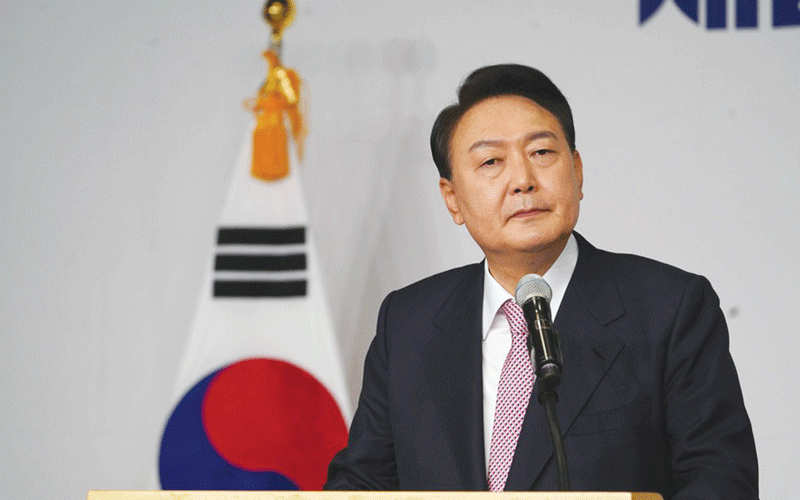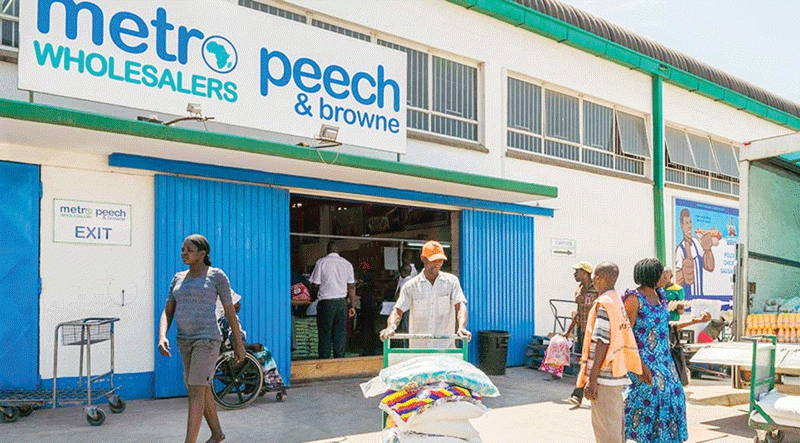
UNDER the heavy African sky, an aura of unease seeps into Zimbabwe’s rural heartland.
As the sun retreats behind the hills of Tandi communal lands in Rusape, Manicaland province, it casts long, spectral shadows over VaMamoyo’s small thatched hut.
VaMamoyo is a woman of remarkable tenacity.
Her skin, a complex tapestry of wrinkles, echoes tales of her endurance and resilience.
Looking closely at a meagre assembly of grocery items that lay before her, she looks at them with a worried frown.
The pile is too small — the result of rising costs in Zimbabwe.
Before price riots in the past two months, the same amount of money used to purchase the groceries would fetch sufficient provisions to last a month.
But VaMamoyo's plight is not unique.
- Masvingo turns down fire tender deal
- Byo author eyes SA award
- WhaWha triumphs in the slugfest of wardens
- 2 DJs murdered over woman
Keep Reading
Other consumers across Zimbabwe are facing the same predicament.
The poverty that confronts her is being replayed across financially handicapped citizens, who are reeling from the devastating effects of food inflation.
The cost of putting food on the table is now a major concern across Zimbabwe, a country with a complex history of food inflation.
Earlier this year, a World Bank report found that Zimbabwe has the highest food inflation rate globally, at 285%.
In an interview with the Zimbabwe Independent, economic analyst Victor Bhoroma said high food inflation was being underpinned by high imports caused by low levels of domestic production.
“Sourcing food and raw materials at a high price takes a lot of foreign currency, which could be allocated to production purposes,” Bhoroma said.
“The final prices for all consumer goods are beyond the reach of an average Zimbabwean. The cost of living remains elevated beyond the reach of half of the population currently,” he added.
Bhoroma said in the past two years, food prices had increased due to the Russia/Ukraine war, which has affected supply chains.
“Developing economies, such as Zimbabwe are being hit due to their reliance on the two warring parties for fuel and grain. Ukraine is the world’s largest producer of sunflower oil.
“Combined with Russia, it is responsible for more than half of global exports of vegetable oils and over 36% of the world’s wheat. This has led to a rise in food prices globally,” Bhoroma added.
There have been knock-on effects on the Zimbabwe dollar, which has depreciated by over 640% since January, according to Inter Horizon Securities (IH), a leading research firm.
This has caused price disparities across retail outlets, a snap survey by the Zimbabwe Independent showed.
For instance, in one supermarket, a 10kg of roller meal was this week going for ZW$39 999,99 (about US$5,26 at US$1:ZW$7 600), while in another, the same product is selling at US$7,34.
A 1kg of sugar was selling for US$1,70 in one leading supermarket, while selling for US$2,50 in downtown Harare.
A recent report by IH titled Zimbabwe 2023 Consumer Sector Report said Zimbabwe’s economy continued to face inflation, currency and exchange rate headwinds.
“It is difficult to plan using a depreciating currency, such as the Zimbabwe dollar, pay suppliers or receive payment in it,” IH said.
Bhoroma said the economy had only been kept afloat by the greenback.
“The US dollar circulating in the economy is the only fabric holding the economy at the moment as it brings a stable currency for planning and trade,” he noted.
Bhoroma suggested that consumers utilise pieces of land available to them to grow organic food for household consumption and buy stocks of maize during off-peak periods.
“For businesses, it is largely an issue of investing in storage facilities, cold chain and out-grower schemes to source food raw materials on time and in the right quantities for production purposes,” Bhoroma said.
In May, Finance and Economic Development minister Mthuli Ncube lifted all restrictions on the importation of basic commodities as part of plans to stem the price rage. Bhoroma is, however, of the view that the interventions were not sustainable, as they were largely motivated by the need to appease the electorate ahead of general elections in August.
“The few connected will import and mark up, taking advantage of current high prices or creating shortages to increase prices,” he said.
“The aim is not to address economic structural challenges or incentivise local production. It involves outsourcing production, exporting and creating rent-seeking opportunities for importers with access to loads of foreign currency.”
Zimbabwe’s farmers are also grappling with rising food prices.
Commercial farmer and Zimbabwe Women and Youth in Agribusiness Trust administrator Nyasha Chitakunye said disruptions and inefficiencies in the supply chain had contributed to high food inflation.
“Government can intervene by putting emergency policies in place and also offering subsidies for basic goods. Keeping high levels of inventory at any given time can also assist,” she said.
Leading humanitarian information source, ReliefWeb noted that climate change had been a major driver of food inflation.
This was witnessed in March 2019 when Cyclone Idai had devastating effects on food security.
Against this backdrop, Chitakunye said: “Climate changes and weather patterns also affect food availability and accessibility. Resultantly, in Zimbabwe, food-related diseases may emerge such as kwashiorkor and general nutrition deficiencies”.
To curb food inflation, Chitakunye said there was need to support farmers.
Over the years, the government implemented Statutory Instruments to control trade in maize, which is a strategic crop.
Commenting on the impact of these measures, Chitakunye said farmers may still prefer other buyers due to favourable prices leading to shortages.
In an emailed response, the World Food Programme Zimbabwe (WFP) said food inflation was making humanitarian efforts expensive in Zimbabwe.
“The burden is greater on programmes that do not use US dollars because food inflation has been steeper in Zimbabwean dollar terms. This means entitlements being provided may no longer be enough to cover the minimum food basket,” WFP said.
“Adjustments are required to make sure assistance covers the minimum food basket. However, as the situation continues to be fluid, this is difficult to plan and budget for.”
The United Nations agency noted that with food prices increasing every month, coupled with salary and income stagnation, many households — particularly urban dwellers — were finding it difficult to purchase minimum nutritious food baskets and basic commodities.
“Not consuming diversified foods including vegetables, fruits and protein has negative effects on health, including micronutrient deficiencies, stunting and poor growth,” it said.
“In many circumstances, women and young girls eat last and least when there is not enough food.
“Food inflation impacts vulnerable populations, such as those living in poverty or in conflict-affected areas, as these groups already struggle to get minimum food basket and food inflation will result in them engaging in negative coping strategies,” WFP said.
According to the Consumer Council of Zimbabwe, low-income urban earners’ monthly basket for a family of six has increased tremendously.
In a move to curtail food inflation, WFP stated that: “We are providing in-kind and cash food assistance throughout rural and urban areas. To facilitate this, WFP works closely with government and monetary authorities to provide the most stable currency in its interventions”.
Sustainable Developmental Goals (SDG) champion, Tanatsiwa Dambuza indicated that working towards achieving SDG 2 (Zero Hunger) in the context of rising food inflation required a multi-stakeholder and multi-sectoral approach.
“There is a need to implement policies and programmes that address the four dimensions of food security,” he said.
“That is investing in innovation and technology that enhance the efficiency, productivity, quality and resilience of food systems; and supporting the implementation of the African Continental Free Trade Area, Agenda 2063, UN Agenda 2030 and SADC… frameworks for regional integration,” Dambuza said.
Highlighting the urgent need for policy interventions to ensure food security and affordability, the Consumer Protection Council (CPC) raised a red flag on the bearing of food inflation on the purchasing power of households.
“When the prices are going up in our local currency, it reduces the purchasing power of consumers and this will make the aggregate demand fall and eventually the economy shrinks,” CPC chairperson Mthokozisi Nkosi said.
“We are concerned because consumers are being short-changed and we are working closely with sister organisations, for example, the National Competitive Commission in ensuring that prices are fair to the market.
“Consumers can boycott certain products if they believe the products are beyond their reach and suppliers of those products will have a rethink of what they are doing,” he added.
Questions sent to the Ministry of Finance and Economic Development had not been responded to at the time of going to print.
Jojo is a media practitioner with a special focus on journalism and digital marketing. She loves the shape of stories, sentences and creation of different words on a page and has a passion of disseminating news of the day in the interest of socio-economic privilege. She is also a 2023 Womentorship fellow. This article was published with support from Friedrich Naumann Foundation through its Womentorship Fellowship Programme targeting young and upcoming female journalists. The Womentorship programme was designed in 2021 after a realisation that female journalists occupy a few leadership positions. Its objective is to capacitate female journalists to ensure gender balance in the newsrooms, while creating a safe space for them.











